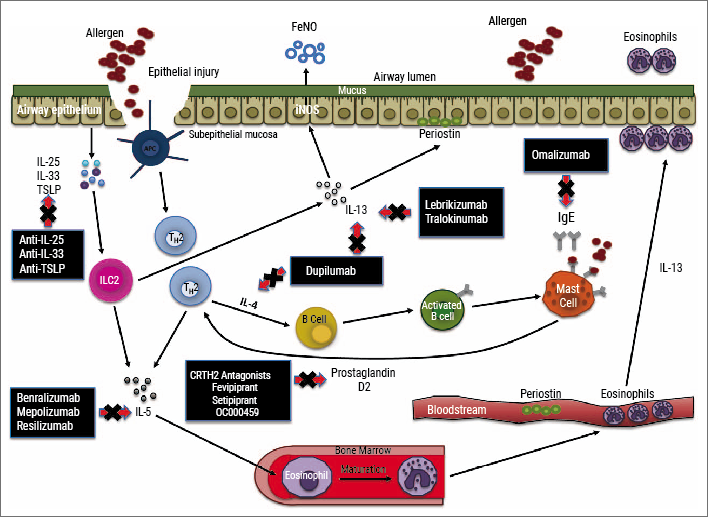https://doi.org/10.55788/7c04588b
“PAH is a cardiopulmonary disease with no cure,” Dr Gustavo Heresi (Cleveland Clinic, OH, USA) started his presentation. “This condition, with pulmonary vasoconstriction, vascular remodelling, fibrosis, inflammation, thrombosis, and right ventricular failure, is associated with high 5-year mortality rates.” He further explained that low HDL cholesterol and glucose intolerance are prevalent in patients with PAH. “And patients with these attributes have worse survival outcomes [1].” Dr Heresi and colleagues hypothesised that a diet and exercise intervention would improve insulin sensitivity and right ventricular function in patients with PAH [2]. The PHINE study (NCT03288025) randomised 30 patients with PAH 1:1 to standard-of-care or a supervised exercise protocol, 5 times per week, plus weekly diet counselling (LoGIx/Mediterranean). The primary endpoint was insulin sensitivity at 12 weeks.
The investigators observed no differences between the 2 study arms regarding insulin sensitivity or right ventricular strain. They did however notice an improved right ventricular function measured by tricuspid annular plane systolic excursion (TAPSE)– in the intervention arm (delta 0.3 cm; P=0.028). Furthermore, the intervention group outperformed the control group for peak VO2 (delta 3.7 mL/kg/min; P=0.0004) and 6-minute walking distance (delta 37 m; P=0.064). “The participants in the intervention arm also reported a significantly improved PAH-related quality-of-life and more frequently displayed an improvement in NYHA functional class,” mentioned Dr Heresi.
“We noticed various health-related improvements in patients with PAH who followed an exercise and diet intervention. Notably, these improvements were independent of insulin sensitivity, suggesting that insulin resistance is not a pathobiological pathway in PAH,” argued Dr Heresi. “The findings of this study illustrate that exercise and diet should be incorporated in the PAH treatment armamentarium.”
- Heresi GA, et al. Am J Respir Crit Care Med. 2010;182(5):661-668.
- Heresi GA, et al. Pulmonary arterial hypertension improvement with nutrition and exercise (PHINE): a randomized controlled trial. Late-breaking abstracts: science that will impact clinical care. ATS 2024, 17–22 May, San Diego, USA.
Medical writing support was provided by Robert van den Heuvel.
Copyright ©2024 Medicom Medical Publishers
Posted on
Previous Article
« STARSCAPE: Zinpentraxin alfa does not ameliorate health status in IPF Next Article
Can mindfulness reduce depression and anxiety in ICU survivors? »
« STARSCAPE: Zinpentraxin alfa does not ameliorate health status in IPF Next Article
Can mindfulness reduce depression and anxiety in ICU survivors? »
Table of Contents: ATS 2024
Featured articles
NOTUS: Dupilumab safe and efficacious in COPD with type 2 inflammation
Sulthiame may be the next treatment for OSA
Miscellaneous Topics
Pirfenidone may alleviate disease burden in DRCB
Can mindfulness reduce depression and anxiety in ICU survivors?
Exercise and diet improve functional status in PAH
Idiopathic Pulmonary Fibrosis
STARSCAPE: Zinpentraxin alfa does not ameliorate health status in IPF
COPD
COURSE: Encouraging results for tezepelumab in COPD
Ensifentrine delays transition from GOLD B to GOLD E in COPD
NOTUS: Dupilumab safe and efficacious in COPD with type 2 inflammation
BOREAS: Blood eosinophil count and FeNO levels predictive of dupilumab response in COPD
Respiratory Infections
Two regimens deliver high sputum conversion rates in M. xenopi pulmonary infection
Patient-reported outcomes improve practice in MAC lung disease
Novel RSV vaccine to prevent serious respiratory illness
Asthma
UCAP: Identify and treat undiagnosed COPD or asthma
Structural and functional lung improvement with dupilumab in asthma
Obstructive Sleep Apnea
Is the Apnea Hypopnea Index ready to be replaced?
Does PAP therapy truly reduce mortality in OSA?
Sulthiame may be the next treatment for OSA
Related Articles

November 24, 2018
Letter from The Editor

November 7, 2018
[Long Read] Current Look on Asthma
© 2024 Medicom Medical Publishers. All rights reserved. Terms and Conditions | Privacy Policy
HEAD OFFICE
Laarderhoogtweg 25
1101 EB Amsterdam
The Netherlands
T: +31 85 4012 560
E: publishers@medicom-publishers.com

